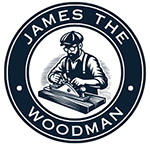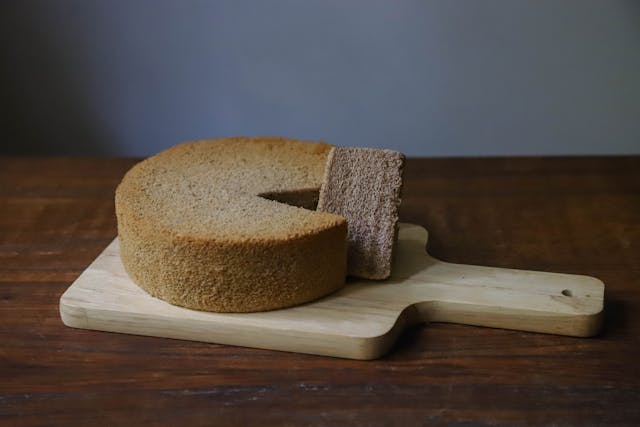Wooden cutting boards are a staple in many kitchens. They are durable, attractive, and often preferred by professional chefs and home cooks alike for their ability to preserve knife edges better than plastic or glass surfaces. However, wooden boards also require careful maintenance to remain hygienic. Unlike other materials, wood is porous and can absorb moisture and food particles, which creates a breeding ground for bacteria if not cleaned properly. Understanding how to maintain a wooden cutting board is essential not only for food safety but also for extending the life of the board. This article provides a detailed guide on keeping your wooden cutting board free of bacteria through proper cleaning, maintenance, and storage practices.
Why Wooden Cutting Boards Require Special Care
Unlike plastic boards, which can be run through a dishwasher, wooden cutting boards cannot withstand high heat, prolonged soaking, or harsh detergents. These practices can damage the wood, causing cracks and warping that make the board even more difficult to clean. At the same time, because wood is porous, it can absorb juices from raw meat, fish, and other foods, creating an environment where harmful bacteria such as Salmonella or E. coli could survive. Despite these risks, wooden cutting boards are not inherently unsafe. In fact, studies have shown that some types of wood naturally inhibit bacterial growth. The key to safety is proper care and consistent cleaning habits.
Immediate Cleaning After Use
One of the most effective ways to keep bacteria at bay is to clean the board immediately after each use. Allowing food residue or liquids to sit on the board for an extended period increases the risk of bacterial growth. After chopping vegetables, fruit, or bread, it is usually enough to rinse the board under hot water and scrub it with a small amount of mild dish soap. For raw meat, poultry, or fish, extra attention is needed to ensure no residue remains on the surface. Always use a scrub brush or sponge dedicated to cleaning cutting boards to avoid cross-contamination from other cleaning tools.
Using the Right Cleaning Agents
When it comes to cleaning wooden cutting boards, gentle but effective cleaning agents are best. Harsh chemicals or strong detergents can damage the wood or leave behind residues that affect food safety. Mild dish soap and hot water are the most common cleaning agents. For deeper cleaning, natural antibacterial options like white vinegar and lemon juice are effective. Vinegar can be sprayed directly on the board and wiped down to kill bacteria. Lemon juice, when rubbed onto the surface, not only sanitises the board but also helps neutralise odours. Coarse salt combined with lemon juice can also be used to scrub the board, removing both stains and bacteria.
Avoiding Water Damage
One of the biggest mistakes people make is soaking their wooden cutting board in water. Prolonged exposure to water causes the wood to swell, warp, or even crack, creating small crevices where bacteria can hide. Instead, boards should be rinsed quickly, scrubbed thoroughly, and then dried immediately with a clean towel. Standing water should never be left on the surface. To further prevent moisture-related damage, always store wooden boards in an upright position to allow proper air circulation and complete drying.
Sanitising Your Cutting Board
In addition to regular cleaning, periodic sanitising is important to ensure bacteria do not accumulate. Household vinegar, diluted hydrogen peroxide, or a mild bleach solution can all be used safely. For a vinegar treatment, spray the surface and let it sit for several minutes before rinsing and drying. A 3% hydrogen peroxide solution can be poured over the board and spread with a clean cloth to sanitise it. If using bleach, ensure it is diluted properly—typically one tablespoon of unscented bleach to one litre of water. After sanitising, rinse thoroughly with hot water and dry completely to prevent any chemical residue.
Maintaining the Board with Oil
Keeping a wooden cutting board in good condition is another important step in preventing bacterial growth. A dry or cracked board will trap food particles and moisture more easily, making cleaning less effective. Regularly applying food-grade mineral oil helps keep the wood sealed and conditioned, reducing its ability to absorb liquids. The process is simple: apply a generous amount of oil to the surface, spread it evenly with a cloth, and allow it to soak overnight. Wipe off any excess oil in the morning before using the board. Conditioning should be done at least once a month, or more often if the board is used heavily.
Separating Boards for Different Foods
Another effective way to reduce the risk of bacterial contamination is to use different cutting boards for different types of food. Many households keep one wooden board specifically for bread, fruit, and vegetables, and another board—sometimes plastic—for raw meat and fish. This separation greatly reduces the likelihood of cross-contamination. Wooden boards are particularly well-suited for dry foods and produce, while non-porous boards are often easier to sanitise after contact with raw animal products.
Handling Stains and Odours
Even with proper cleaning, wooden cutting boards can develop stains and odours over time. These issues not only affect appearance but can also indicate areas where bacteria may accumulate. To address stains, a paste made of baking soda and water can be applied to the surface and scrubbed gently. For persistent odours, sprinkling coarse salt on the board and rubbing it with half a lemon is an effective method. Both techniques are safe and help restore the board to a fresher condition without the need for harsh chemicals.
Knowing When to Replace a Cutting Board
No matter how well a wooden cutting board is maintained, it will eventually reach the end of its usable life. Deep grooves, cracks, and persistent stains make thorough cleaning nearly impossible and increase the risk of bacterial contamination. When these signs appear, it is time to replace the board. A good-quality wooden cutting board can last for many years with proper care, but safety should always come first.
Conclusion
Keeping a wooden cutting board free of bacteria requires consistent cleaning, careful handling, and regular maintenance. Immediate washing after use, using safe cleaning agents, avoiding prolonged exposure to water, and sanitising the board periodically are all key practices. Conditioning with food-grade oil and separating boards for different food types further enhances hygiene. While wooden cutting boards require more care than other materials, their durability and aesthetic appeal make them a worthwhile choice for many kitchens. By following these guidelines, you can enjoy the benefits of a wooden cutting board while ensuring it remains safe and free of harmful bacteria.

